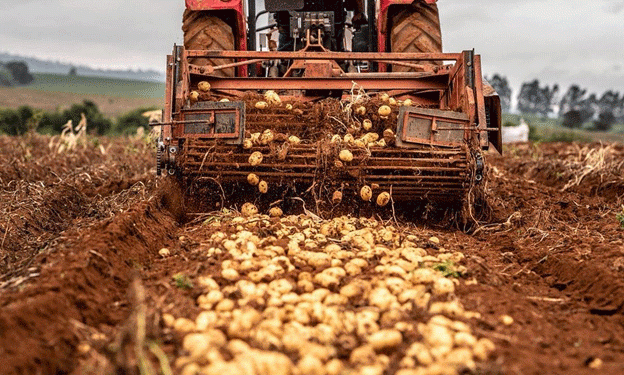As summer approaches, potato prices in Brazil have seen a notable decrease, driven by a surge in supply from key production areas. Over the last week of October, prices of the popular Ágata variety dropped sharply across wholesale markets in São Paulo, Belo Horizonte, and Rio de Janeiro. This decline reflects the ramped-up harvest pace in regions like South Minas Gerais and Cerrado Mineiro, where growers are racing to complete harvests before moving on to other crop planting cycles, such as soy and corn.
Current Price Trends Across Key Markets
During the week of October 28 to November 1, the average wholesale price of Ágata potatoes fell across Brazil’s major markets:
- In São Paulo (SP), the average price dropped to BRL 89.87 (USD 17.00) per 25 kg, down by 7.79% from the previous week.
- In Belo Horizonte (MG), prices fell to BRL 76.86 (USD 14.55) per 25 kg, a 2.29% decrease.
- Rio de Janeiro (RJ) saw the most substantial drop, with prices reaching BRL 81.00 (USD 15.35) per 25 kg, marking an 11.23% decline.
This drop is primarily attributed to increased supply from South Minas Gerais, where the harvest is progressing swiftly. With the impending start of soybean and corn planting seasons, farmers are motivated to complete potato harvesting promptly to prepare fields for subsequent crops.
Regional Harvest Updates and Weather Impact
In São Paulo and Minas Gerais, while harvest was temporarily disrupted by early-week rains in the Triângulo Mineiro region, output picked up thanks to favorable conditions in South Minas and Cerrado Mineiro. By midweek, rains had subsided in Cerrado Mineiro, allowing farm activities to resume and boosting the volume of potatoes brought to market.
Looking ahead, however, this price-lowering trend may be short-lived. The Goiás region is expected to wind down its potato harvest shortly, which could constrict supply and push prices upward. Furthermore, predicted rainfall in the coming days may impact the pace of remaining harvests, potentially causing temporary supply gaps.
In Chapada Diamantina, Bahia, harvest volumes are expected to increase over the next few weeks. This uptick could help balance the market by offsetting reductions from regions finishing their winter crops, including Goiás and parts of Minas Gerais.
Brazil’s potato market is experiencing a classic cycle of price fluctuation driven by regional harvest dynamics and weather conditions. While the current drop in prices offers cost benefits to buyers, producers must navigate the impacts of crop sequencing pressures and regional weather shifts. As Goiás nears the end of its harvest and expected rains may again disrupt supply, stakeholders should prepare for potential price increases. The Chapada Diamantina region’s harvest may provide some relief, but strategic planning and market monitoring will remain essential for both buyers and growers in this volatile period.

